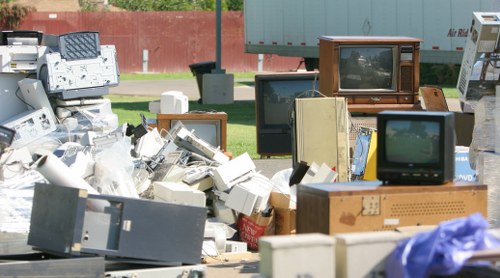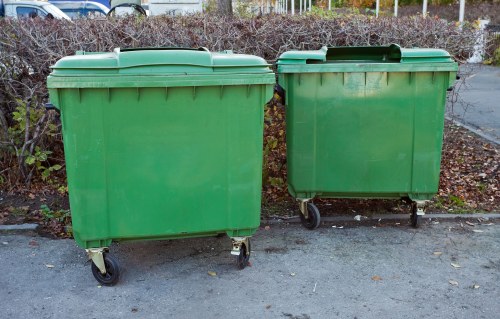Effective Builders Waste Clearance in Temple: A Comprehensive Guide

Embarking on any construction or renovation project inevitably leads to the generation of significant waste. Managing this waste responsibly is not only a legal obligation but also a crucial aspect of maintaining environmental sustainability. In Temple, homeowners and builders alike seek efficient solutions for builders waste clearance.
Builders waste, often referred to as construction debris, includes materials such as concrete, wood, metals, and other by-products of construction activities. Proper clearance of this waste ensures a clean and safe worksite, minimizes environmental impact, and complies with local regulations.
Understanding the intricacies of builders waste clearance in Temple is essential for anyone involved in the construction industry. This guide delves into the best practices, legal requirements, and the benefits of professional waste clearance services.

Why Builders Waste Clearance is Crucial
Effective builders waste clearance plays a pivotal role in various aspects of construction projects:
- Safety: Removing debris reduces hazards on the construction site, preventing accidents and ensuring the safety of workers.
- Environmental Protection: Proper disposal of waste prevents pollution and protects the local ecosystem.
- Legal Compliance: Adhering to waste management regulations avoids legal penalties and fosters responsible construction practices.
- Cost Efficiency: Efficient waste clearance can lead to cost savings by recycling materials and reducing disposal fees.
Neglecting waste management can result in project delays, increased costs, and harm to the environment, making it imperative to prioritize builders waste clearance.

Types of Builders Waste
Builders waste encompasses a wide range of materials generated during construction and demolition:
- Concrete and Masonry: Broken bricks, concrete slabs, and mortar residue.
- Wood and Timber: Offcuts, pallets, and untreated wood scraps.
- Metals: Scrap metal, nails, and other metallic components.
- Plastics: Packaging materials, pipes, and fittings.
- Insulation and Drywall: Excess insulation, drywall pieces, and related materials.
- Hazardous Waste: Paints, solvents, and other chemicals requiring special handling.
Identifying the types of waste generated is the first step in developing an effective clearance and disposal plan.

Legal Requirements for Waste Clearance in Temple
Temple enforces strict regulations concerning the disposal of builders waste to ensure environmental protection and public safety:
- Licensing: Contractors must obtain the necessary licenses for waste transportation and disposal.
- Segregation: Different types of waste must be separated to facilitate recycling and proper disposal.
- Permits: Specific permits may be required for the disposal of hazardous materials.
- Reporting: Regular reporting to local authorities on waste generation and disposal practices is mandatory.
- Recycling Obligations: A certain percentage of waste must be diverted from landfills through recycling initiatives.
Compliance with these regulations not only avoids legal repercussions but also promotes sustainable building practices.

Choosing the Right Builders Waste Clearance Service
Key Factors to Consider
Selecting a reliable waste clearance service in Temple involves evaluating several factors:
- Experience and Reputation: Look for companies with a proven track record and positive customer feedback.
- Compliance: Ensure the service provider adheres to local regulations and environmental standards.
- Range of Services: Comprehensive services, including waste collection, transportation, and recycling, offer convenience and efficiency.
- Cost-Effectiveness: Competitive pricing without compromising on service quality is essential.
- Availability: Timely service ensures that waste clearance does not delay the construction timeline.
Benefits of Professional Services
Engaging professional waste clearance services offers numerous advantages:
- Efficiency: Experts handle waste management swiftly, keeping projects on schedule.
- Safety: Professional handling minimizes the risk of accidents and exposure to hazardous materials.
- Environmental Responsibility: Experienced providers employ sustainable practices, enhancing your project's green credentials.
- Cost Savings: Proper recycling and waste management can reduce overall project costs.
- Peace of Mind: Knowing that waste is managed responsibly allows you to focus on other project aspects.
Steps to Effective Builders Waste Clearance
Implementing an effective waste clearance strategy involves several steps:
- Assessment: Evaluate the quantity and types of waste generated.
- Planning: Develop a waste management plan outlining collection, sorting, and disposal methods.
- Segregation: Separate recyclable materials from non-recyclable waste at the source.
- Collection: Arrange for regular waste pickup to prevent accumulation.
- Transportation: Ensure safe and compliant transportation of waste to disposal or recycling facilities.
- Disposal and Recycling: Dispose of waste in designated landfills or recycle materials to minimize environmental impact.
Following these steps ensures a streamlined waste management process, promoting efficiency and sustainability.
Environmental Impact of Builders Waste
The improper disposal of builders waste has far-reaching environmental consequences:
- Landfill Overuse: Excessive waste can overwhelm landfill capacity, leading to increased land use and potential contamination.
- Resource Depletion: Failing to recycle materials results in the unnecessary extraction of natural resources.
- Pollution: Hazardous waste can leach into soil and water sources, causing pollution and harming wildlife.
- Carbon Footprint: Inefficient waste management contributes to greenhouse gas emissions, exacerbating climate change.
Responsible waste clearance mitigates these impacts, fostering a healthier environment.
Innovations in Builders Waste Clearance
The field of builders waste clearance is continually evolving, with innovations enhancing efficiency and sustainability:
- Advanced Recycling Technologies: Improved methods for recycling concrete, metal, and other materials increase waste diversion rates.
- Digital Waste Tracking: Software solutions track waste generation and disposal, ensuring compliance and optimizing processes.
- Eco-friendly Disposal Methods: Alternatives to traditional landfilling, such as waste-to-energy, reduce environmental impact.
- Green Certifications: Certification programs incentivize sustainable waste management practices among builders and contractors.
- Modular Construction: Prefabricated components minimize on-site waste generation.
Embracing these innovations can significantly enhance the effectiveness of waste clearance strategies.
Cost Considerations for Builders Waste Clearance
Managing the costs associated with waste clearance is vital for maintaining project budgets:
- Service Fees: Professional waste clearance services charge based on the volume and type of waste.
- Recycling Savings: Recycling certain materials can offset disposal costs through rebates or reduced waste volume.
- Regulatory Fines: Non-compliance can result in hefty fines, making adherence financially prudent.
- Operational Efficiency: Efficient waste management reduces labor and time costs on the construction site.
- Long-term Savings: Sustainable practices contribute to long-term cost savings by preserving resources and maintaining site safety.
Balancing these factors ensures cost-effective waste clearance without compromising on quality or compliance.
Case Studies: Successful Waste Clearance in Temple
Examining real-world examples of effective builders waste clearance can provide valuable insights:
Project A: Residential Development
A local contractor implemented a comprehensive waste management plan, segregating materials and partnering with a recycling service. This approach reduced landfill waste by 40% and lowered overall project costs through material recycling.
Project B: Commercial Renovation
A commercial renovation project in Temple utilized advanced waste tracking software to monitor waste generation and disposal. This led to improved compliance with regulations and enhanced operational efficiency.
Project C: Green Building Initiative
A builder focused on sustainable practices incorporated modular construction techniques and eco-friendly disposal methods, significantly minimizing environmental impact and earning green building certifications.
These case studies highlight the benefits of proactive waste clearance strategies in various construction contexts.
Future Trends in Builders Waste Clearance
The landscape of builders waste clearance is poised for significant changes driven by technological advancements and increasing environmental awareness:
- Automation: Automated sorting systems will enhance efficiency and accuracy in waste segregation.
- Artificial Intelligence: AI-driven analytics will optimize waste management processes, predicting waste generation patterns and improving resource allocation.
- Circular Economy: Emphasizing the reuse and recycling of materials will become a central focus, reducing reliance on virgin resources.
- Blockchain Technology: Blockchain can provide transparent tracking of waste from generation to disposal, ensuring accountability and compliance.
- Sustainable Materials: The development and use of biodegradable and recyclable construction materials will reduce overall waste.
Staying abreast of these trends will enable builders and contractors in Temple to adopt cutting-edge waste clearance practices, enhancing sustainability and operational efficiency.
Conclusion
Builders waste clearance is a critical component of construction projects, impacting safety, environmental sustainability, and regulatory compliance. In Temple, implementing effective waste management strategies not only ensures a clean and safe worksite but also contributes to the broader goal of environmental stewardship.
By understanding the types of builders waste, adhering to legal requirements, and leveraging professional clearance services, builders can achieve efficient and responsible waste management. Embracing innovations and proactive planning further enhances the effectiveness of waste clearance efforts, promoting a sustainable future for the construction industry.
Don’t let construction waste hinder your project’s success. Contact us today to learn more about our professional builders waste clearance services in Temple and ensure your construction project is efficient, compliant, and environmentally friendly.